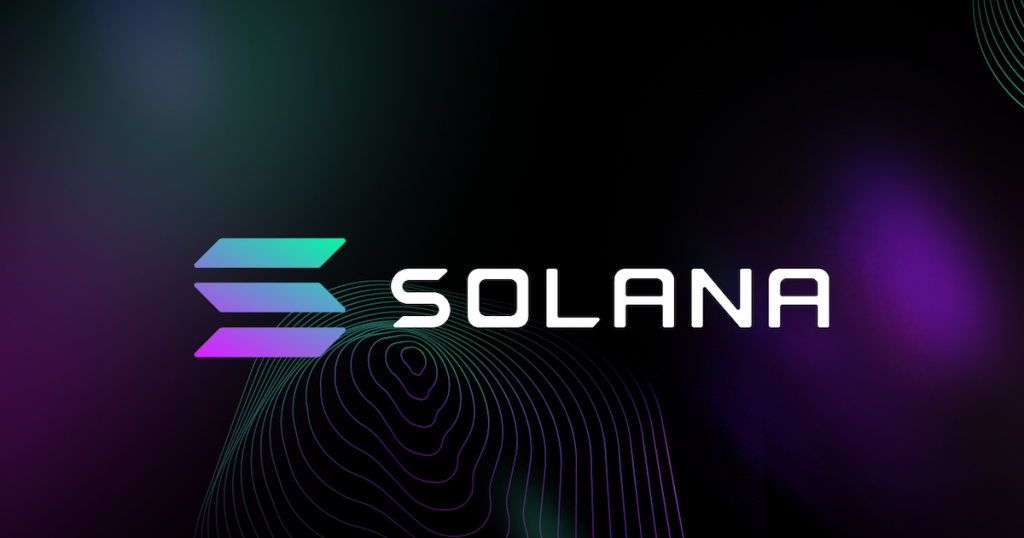Over the past month, Solana has garnered significant attention from the cryptocurrency community, with its native token (SOL) registering a 46x price increase year-to-date, propelling it into the top 10 cryptocurrencies by market capitalization.
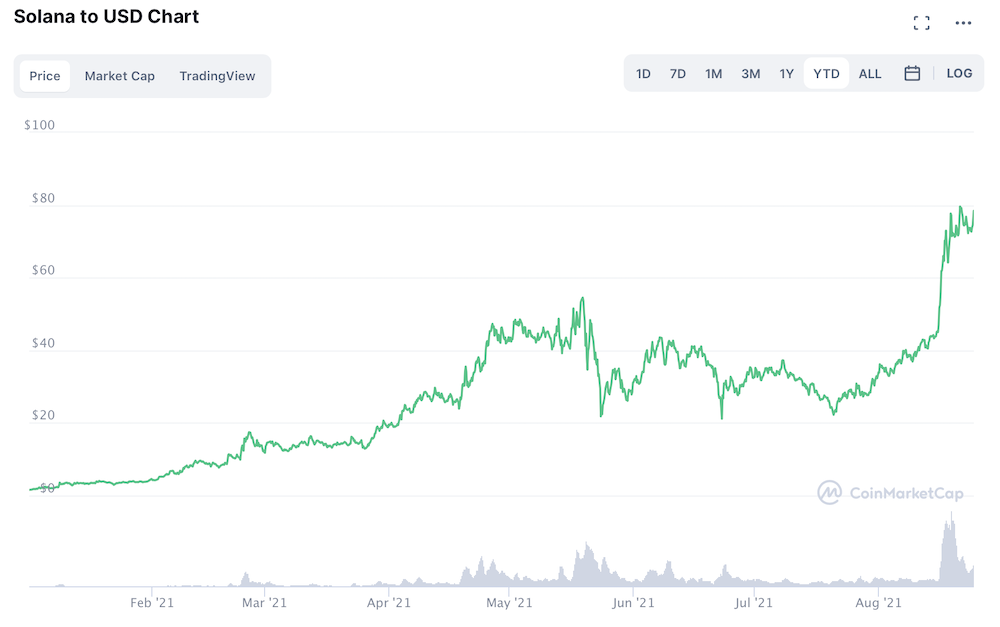
So what is Solana, and why has it generated so much hype recently?
Introduction to Solana
Although it has garnered strong recent attention, Solana was actually started back in 2017 by Anatoly Yakovenko, a former engineer at Qualcomm who spent a large part of his career working on wireless protocols.
Solana began as an open-source project focused on tackling what Yakovenko felt was the single biggest challenge with existing blockchains — scalability due to transaction settlement speed and bandwidth.
The protocol has emerged strongly over time as a highly credible candidate to compete with Ethereum and Binance Smart Chain (BSC), the two current market leading blockchains by transactions.
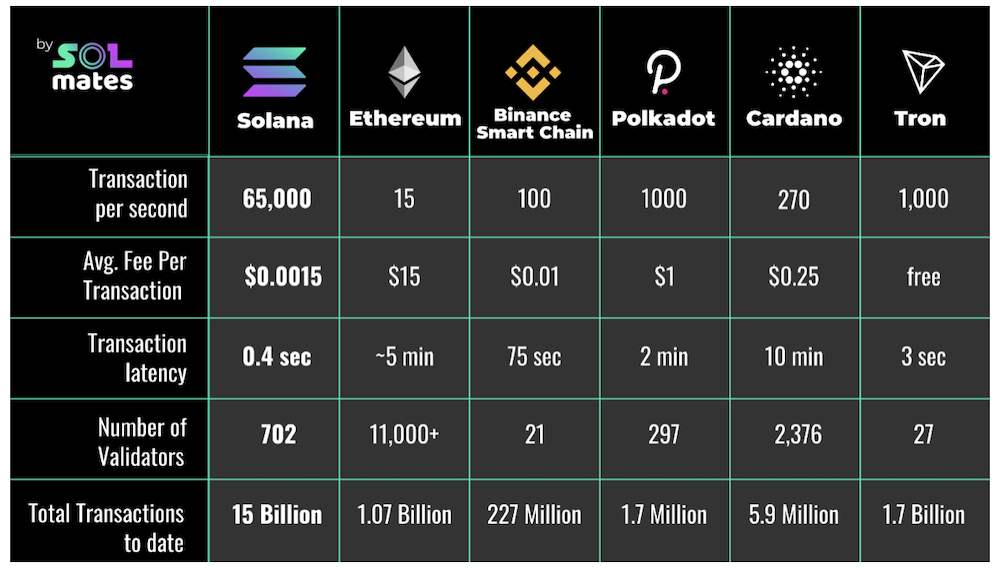
Solana’s primary value proposition is the ability of its architecture to process a large magnitude of transactions per second in contrast to its competitors, with the lowest average fee per transaction compared to its rival networks.
Typically, blockchains suffers the popular blockchain trilemma – one can only choose two out of the following three aspects: decentralized, scalable, or secure.
Given the rapid rise of blockchain adoption and usage globally, Solana’s greater efficiency on both speed and cost translates into a compelling proposition for blockchain developers who are increasingly building protocols that have massive user bases and need to support large transaction volumes.
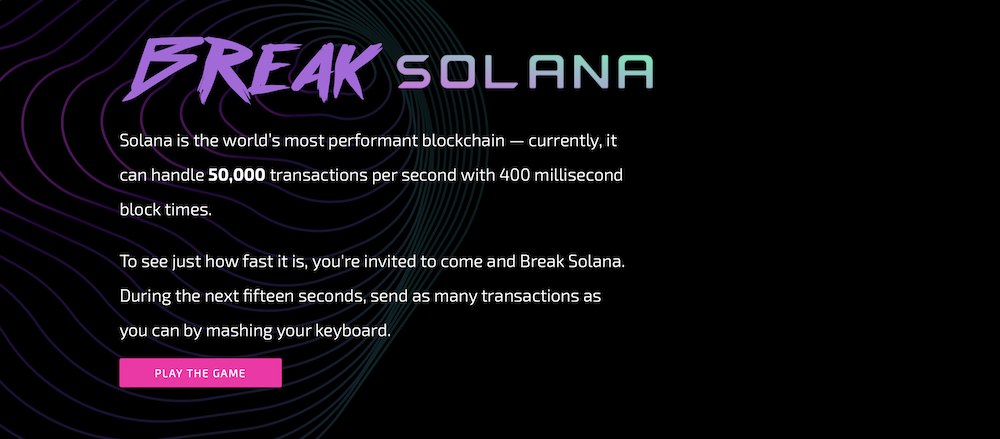
Solana prides itself on its status as the ‘world’s most performant blockchain’, and even runs a tool on its website where users are challenged to try and ‘break’ Solana by sending as many transactions as possible to the network.
Solana’s core innovation: Proof of History
While the Solana blockchain contains a number of innovations which power its greater scalability compared to other blockchains at present, the big breakthrough at the heart of the Solana blockchain is a consensus mechanism known as ‘proof-of-history’ (PoH).
Conventionally, the primary means of reaching consensus on blockchains has been known as ‘proof-of-work’ (PoW), where members of the network (miners) expend effort solving arbitrary mathematical puzzles to process and validate transactions on the blockchain.
This is the consensus mechanism utilized in Bitcoin and Ethereum (historically), and has been criticized for being energy inefficient, expensive, and not scalable.
In response to the challenges of PoW, many blockchains have moved to a new consensus mechanism known as proof-of-stake (PoS), which requires users to lock up cryptocurrency assets to become validators in the network.
These validators are responsible for the same actions as miners in the PoW mechanism, with the added advantage of greater energy efficiency (since less computational power is required) and lower barriers to entry, with reduced hardware requirements necessary for validators to participate in the network. Notably, Ethereum is moving to PoS as part of its move to Eth2.
While both PoW and PoS rely on sequential production of blocks that require confirmation across their respective networks before moving forward (i.e., different nodes need to interact with each other to establish time and order of events), Solana’s PoH breaks this sequential mechanism via the concept of a historical record.
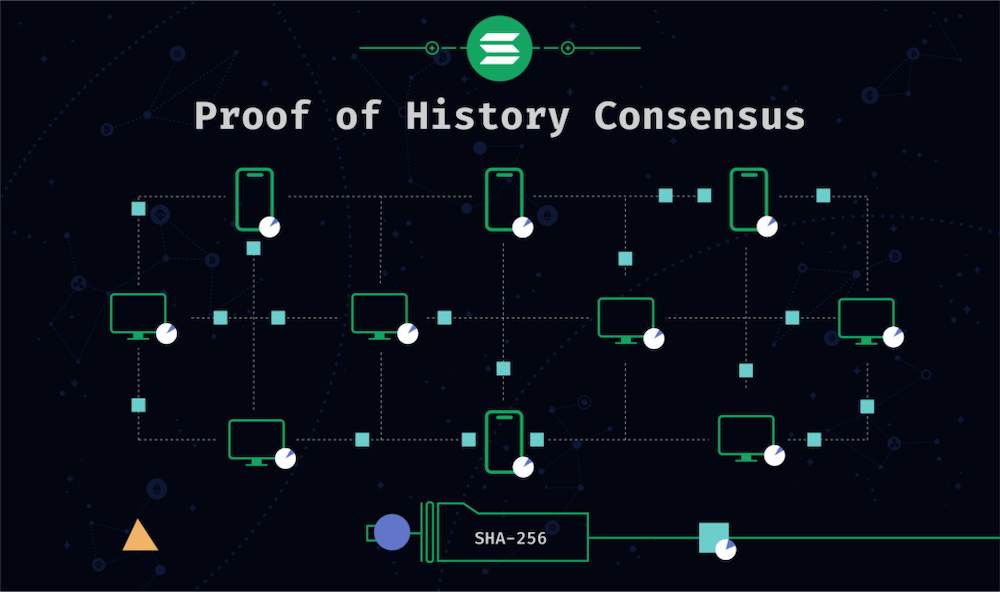
In simple terms, the Solana network essentially chains messages together to create proof of the relative order and time of each message in the historical record.
This ‘cryptographic time stamp’ establishes the relative order and time of each message in the historical record, which allows Solana validators to verify these proofs in any order, creating superior throughput and efficiency in the network.
This core innovation powers the ability of the Solana network to handle 50,000 transactions per second with 400 millisecond block times, which is currently unparalleled in blockchain.
Rapid growth with white space for further mainstream adoption
As Solana has increasingly demonstrated its value proposition to developers, the number of protocols running on it have grown significantly, with a total of 302 at the time of writing (compared to 47 in May this year).
However, this still lags behind other blockchains such as Ethereum, which has over 3,000 decentralized applications in its network.
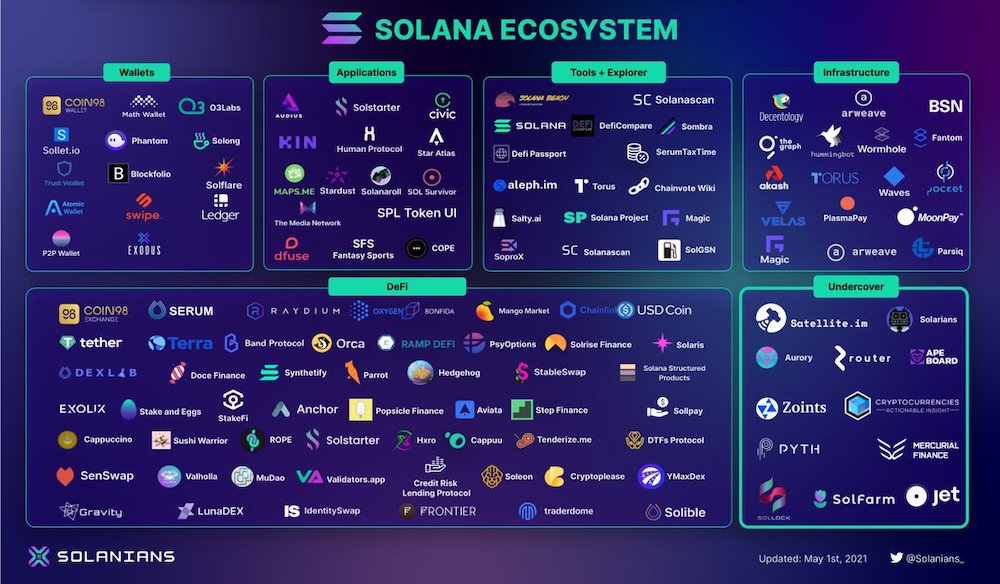
Popular decentralized applications (Dapps) on Solana include Rayduim (leading decentralized exchange in Solana), Mango Markets (cross-margin trading and lending), and SolFarm (yield aggregation). Solana’s native token, SOL, is also listed on all major exchanges, including Coinbase, FTX, Binance, and Gemini.
The popularity of new segments such as play-to-earn gaming and NFTs in the cryptocurrency space offers a large white space opportunity for Solana, given the large user bases and high transaction volumes involved.
While the Ethereum network is in the process of upgrading, many users continue to be frustrated by high gas fees and network congestion, particularly at times of ‘peak’ usage, such as during limited NFT releases and NFT gaming events.
As more developers join the ecosystem and build new protocols on Solana, it will be exciting to see how the network develops in comparison with its more mature peers such as Ethereum and BSC. Solana is also one of the most popular Layer 1 blockchain now that is enjoying a L1 DeFi Summer 2.0.
Featured Image Credit: Forkast
Also Read: An Intro To CryptoBlades, The Highest Volume Game On The Binance Smart Chain
